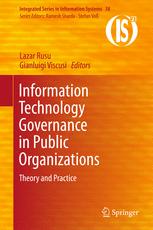

Most ebook files are in PDF format, so you can easily read them using various software such as Foxit Reader or directly on the Google Chrome browser.
Some ebook files are released by publishers in other formats such as .awz, .mobi, .epub, .fb2, etc. You may need to install specific software to read these formats on mobile/PC, such as Calibre.
Please read the tutorial at this link: https://ebookbell.com/faq
We offer FREE conversion to the popular formats you request; however, this may take some time. Therefore, right after payment, please email us, and we will try to provide the service as quickly as possible.
For some exceptional file formats or broken links (if any), please refrain from opening any disputes. Instead, email us first, and we will try to assist within a maximum of 6 hours.
EbookBell Team

5.0
40 reviewsThis book examines trends and challenges in research on IT governance in public organizations, reporting innovative research and new insights in the theories, models and practices within the area. As we noticed, IT governance plays an important role in generating value from organization’s IT investments. However there are different challenges for researchers in studying IT governance in public organizations due to the differences between political, administrative, and practices in these organizations.
The first section of the book looks at Management issues, including an introduction to IT governance in public organizations; a systematic review of IT alignment research in public organizations; the role of middle managers in aligning strategy and IT in public service organizations; and an analysis of alignment and governance with regard to IT-related policy decisions.
The second section examines Modelling, including a consideration of the challenges faced by public administration; a discussion of a framework for IT governance implementation suitable to improve alignment and communication between stakeholders of IT services; the design and implementation of IT architecture; and the adoption of enterprise architecture in public organizations.
Finally, section three presents Case Studies, including IT governance in the context of e-government strategy implementation in the Caribbean; the relationship of IT organizational structure and IT governance performance in the IT department of a public research and education organization in a developing country; the relationship between organizational ambidexterity and IT governance through a study of the Swedish Tax Authorities; and the role of institutional logics in IT project activities and interactions in a large Swedish hospital.